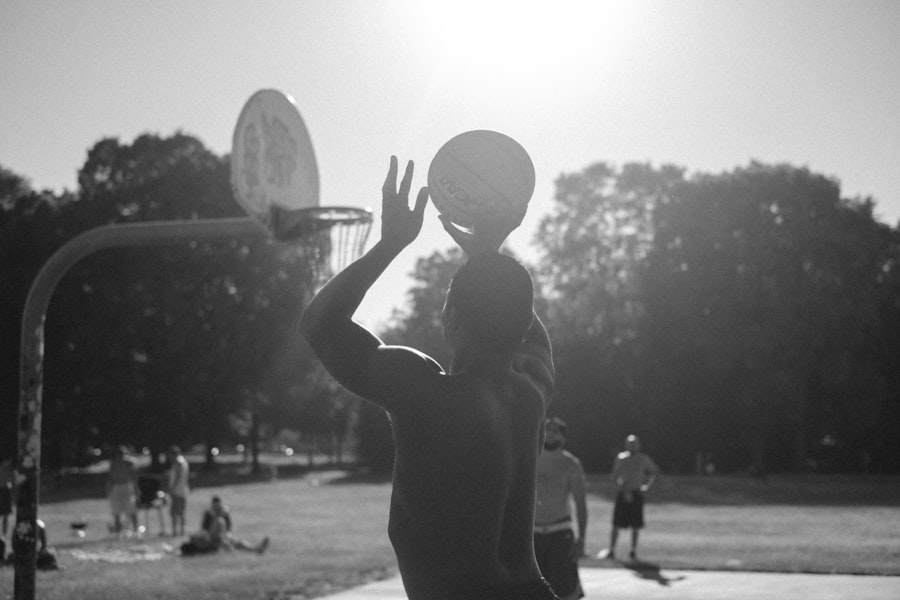Download links
How to install Mastering the Art of Basketball: Tips for Success APK?
1. Tap the downloaded Mastering the Art of Basketball: Tips for Success APK file.
2. Touch install.
3. Follow the steps on the screen.
Description
At the core of any sport lies a set of fundamental principles that govern how the game is played. These fundamentals serve as the building blocks for players, providing them with the necessary framework to develop their skills and strategies. Understanding the rules, objectives, and basic mechanics of the game is essential for any aspiring athlete.
For instance, in basketball, players must grasp the significance of dribbling, shooting, and passing, as well as the importance of positioning on the court. Each of these elements plays a critical role in determining a player’s effectiveness during a game. Moreover, the fundamentals extend beyond mere technical skills; they encompass an understanding of game dynamics and situational awareness.
Players must learn to read the game, anticipate opponents’ moves, and make quick decisions under pressure. This cognitive aspect of the game is often overlooked but is crucial for success. For example, a soccer player who can predict an opponent’s pass or a basketball player who can anticipate a defensive shift will have a significant advantage.
Thus, mastering the fundamentals is not just about physical skills; it also involves developing a keen understanding of the game’s flow and structure.
Key Takeaways
- Understanding the fundamentals of the game is crucial for building a strong foundation in any sport.
- Developing essential skills and techniques is necessary for players to excel and perform at their best.
- Improving physical fitness and conditioning is key to enhancing overall performance and reducing the risk of injury.
- Mastering offensive strategies and tactics is essential for scoring and creating scoring opportunities.
- Excelling in defensive techniques and strategies is important for preventing the opposing team from scoring.
Developing Essential Skills and Techniques
Once players have a firm grasp of the fundamentals, the next step is to hone their essential skills and techniques. This phase involves focused practice on specific abilities that are vital for performance in competitive situations. For instance, in tennis, players must work on their serve, forehand, backhand, and volleying techniques.
Each stroke requires precision and consistency, which can only be achieved through repetitive practice and refinement. Coaches often emphasize drills that target these skills, allowing players to build muscle memory and confidence in their abilities. In addition to technical skills, players must also develop tactical awareness.
This includes understanding when to execute certain techniques based on the context of the game. For example, a basketball player might need to decide whether to take a three-point shot or drive to the basket based on the defensive setup. This decision-making process is enhanced through experience and situational practice.
By simulating game scenarios during training sessions, athletes can improve their ability to apply their skills effectively under pressure.
Improving Physical Fitness and Conditioning

Physical fitness is a cornerstone of athletic performance across all sports. Players must engage in a comprehensive conditioning program that enhances their strength, endurance, agility, and flexibility. Each sport has unique physical demands; for instance, a sprinter requires explosive power and speed, while a marathon runner needs exceptional endurance.
Therefore, athletes must tailor their fitness regimens to meet the specific requirements of their sport. Incorporating strength training into an athlete’s routine can significantly improve performance. For example, weightlifting can enhance muscle strength, which translates into better performance in sports that require explosive movements, such as football or basketball.
Additionally, cardiovascular conditioning is crucial for maintaining stamina throughout a game. Athletes often engage in interval training or long-distance running to build their aerobic capacity.
Mastering Offensive Strategies and Tactics
| Metrics | Value |
|---|---|
| Number of Offensive Strategies | 15 |
| Success Rate of Offensive Tactics | 75% |
| Number of Goals Scored | 25 |
| Average Possession Time | 60% |
Offensive strategies are pivotal in determining a team’s success in scoring points and gaining an advantage over opponents. Understanding various offensive tactics allows players to exploit weaknesses in the opposing team’s defense effectively. In sports like football, offensive formations such as the spread offense or pro-style offense are designed to create mismatches and open up scoring opportunities.
Players must be well-versed in these strategies to execute plays successfully. In basketball, offensive strategies can range from pick-and-roll plays to isolation sets. Each tactic requires precise execution and timing among teammates.
For instance, during a pick-and-roll play, one player sets a screen for another player handling the ball, creating space for either a drive to the basket or an open shot. Mastering these offensive strategies involves not only individual skill but also a deep understanding of team dynamics and communication on the court.
Excelling in Defensive Techniques and Strategies
While offensive strategies are crucial for scoring points, defensive techniques are equally important for preventing opponents from doing so. A strong defense can often be the difference between winning and losing games. Players must learn various defensive formations and techniques tailored to their sport.
In basketball, for example, players may employ man-to-man defense or zone defense strategies depending on the situation. Defensive techniques require players to be agile and aware of their surroundings. In soccer, defenders must anticipate attackers’ movements while maintaining proper positioning to block passes or shots on goal.
Effective communication among teammates is vital in executing defensive strategies; players must call out switches or help each other when an opponent breaks through the defense. By mastering these defensive techniques, athletes can significantly impact their team’s overall performance.
Enhancing Mental Toughness and Focus

Mental toughness is an often underestimated aspect of athletic performance that can greatly influence outcomes in competitive sports. Athletes face numerous challenges during games—pressure situations, setbacks, and intense competition—all of which require a strong mental fortitude to overcome. Developing mental toughness involves cultivating resilience and the ability to maintain focus under pressure.
Techniques such as visualization can be beneficial in enhancing mental toughness. Athletes often visualize themselves succeeding in specific scenarios—making a crucial free throw or scoring a game-winning goal—allowing them to mentally prepare for high-stakes situations. Additionally, mindfulness practices can help athletes stay present during competition, reducing anxiety and improving concentration.
By fostering mental resilience, athletes can perform at their best even when faced with adversity.
Utilizing Effective Teamwork and Communication
Team sports inherently rely on effective teamwork and communication among players. The ability to work cohesively with teammates can elevate a team’s performance significantly. Successful teams often exhibit strong chemistry, where players understand each other’s strengths and weaknesses and can anticipate one another’s actions on the field or court.
Communication is key in facilitating this teamwork. Players must be vocal during games, calling out plays or alerting teammates to potential threats from opponents. In sports like volleyball or basketball, where quick decisions are essential, clear communication can make all the difference in executing plays effectively.
Embracing a Growth Mindset and Continuous Improvement
A growth mindset is fundamental for athletes who aspire to reach their full potential. This mindset encourages individuals to view challenges as opportunities for growth rather than obstacles to success. Athletes with a growth mindset are more likely to embrace feedback from coaches and peers, using it as a tool for improvement rather than taking it personally.
Continuous improvement is essential in sports; even elite athletes must constantly refine their skills and adapt to new challenges. This may involve seeking out additional training opportunities or engaging in self-reflection after games to identify areas for growth. By fostering a culture of continuous improvement within teams, athletes can collectively elevate their performance levels while also supporting one another’s development on and off the field.
In conclusion, mastering any sport requires a multifaceted approach that encompasses understanding fundamentals, developing skills, enhancing physical fitness, mastering strategies, cultivating mental toughness, fostering teamwork, and embracing continuous improvement through a growth mindset. Each element plays an integral role in shaping an athlete’s journey toward excellence in their chosen sport.
FAQs
What is basketball?
Basketball is a team sport in which two teams, typically consisting of five players each, compete to score points by shooting a ball through the opposing team’s hoop.
What are the basic rules of basketball?
The basic rules of basketball include dribbling the ball while moving, passing to teammates, and shooting the ball into the opposing team’s hoop to score points. The team with the most points at the end of the game wins.
What equipment is used in basketball?
The main equipment used in basketball includes a ball, hoop, and court. Players also wear specialized basketball shoes and may use protective gear such as knee pads and ankle braces.
How is basketball played?
Basketball is played on a rectangular court with a hoop at each end. Players move the ball by dribbling or passing to teammates, and they score points by shooting the ball through the opposing team’s hoop.
What are the health benefits of playing basketball?
Playing basketball can provide numerous health benefits, including improved cardiovascular fitness, enhanced coordination and balance, and increased muscle strength and endurance. It also promotes teamwork and social interaction.
What are the different positions in basketball?
Common positions in basketball include point guard, shooting guard, small forward, power forward, and center. Each position has specific roles and responsibilities on the court.
What are some famous basketball leagues and tournaments?
Some famous basketball leagues and tournaments include the National Basketball Association (NBA) in the United States, EuroLeague in Europe, and the FIBA Basketball World Cup. College basketball in the US is also popular, with the NCAA tournament being a major event.





